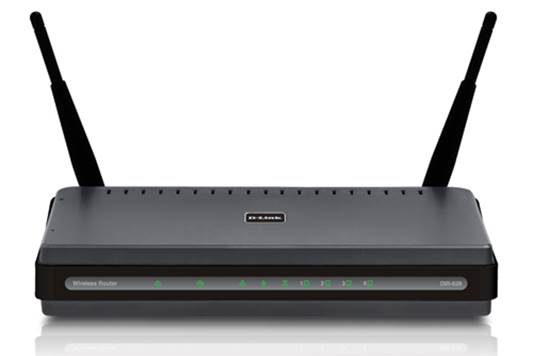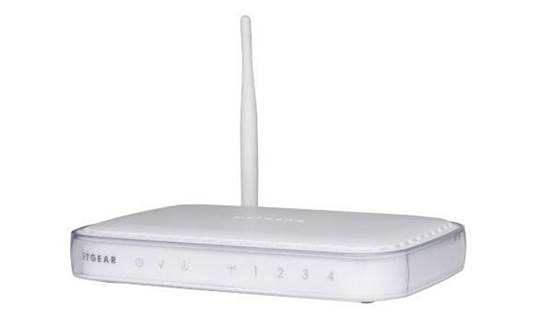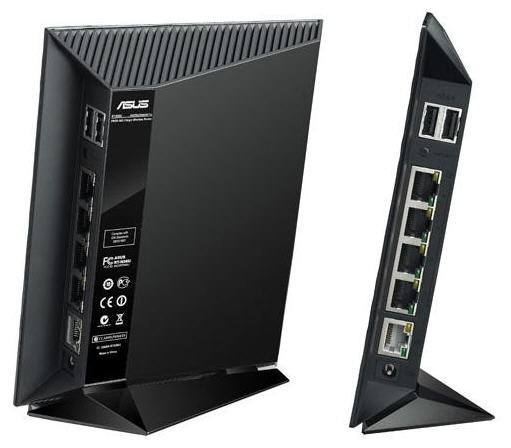Whether you want to go wireless or improve
your current network, we have all the details for you right here!
Routers all look pretty similar from the
outside - a small box of flashing lights with an aerial (or two) sticking out
of the back - but when it comes to choosing one, you have to be aware of the
fairly substantial differences between a router and its immediate neighbour to
ensure that you’re not wasting money or buying the wrong thing.

How
To Buy…A Wireless Router?
The most important qualities of any router
are obvious: you want fast speeds and a long range. But how can you tell
whether you’re getting that? Routers aren’t like many computer peripherals in
that there isn’t a particularly direct relationship between performance and
price. A cheap router might have a longer range and offer faster speeds than an
expensive one, depending purely on the underlying technology within it.
That’s why this week we’re going to explain
what to look for in a router and why you should care. We’ll explain why you
might care whether a router is single-band or dual-band, why it matters how
many aerials it has, and which standards you should be looking for. If you need
to buy a router any time, once you’ve read this you can consider yourself fully
equipped to get one.
How Much Should You Spend?
Be careful of spending too little on a
router; cheap and unbranded devices have a tendency to be unreliable and
difficult to configure, but most annoyingly of all, they underperform in terms
of speed and range as well: low-quality components means an inconsistent
wireless signal, and that means slow communication and shorter range.
The UK’s most popular router has, for
years, been the Netgear DG834G. It’s not especially powerful or fast (it’s only
802.11g and doesn’t even have gigabit Ethernet support), but it has a solid
range, forms reliable connections and is very easy to set up and configure
things like port forwarding and security. Despite its age, it costs somewhere
in the region of $72-$80. If nothing else, what this tells us is that if you’re
thinking of spending less than that for a wireless router, your expectations
need to be adjusted.

Netgear
DG834G
If you really can’t afford to spend that
much on a wireless access point, we recommend you go for a wired router
instead, which should save you around $24 (although you may have to buy network
cables, so it may not be that much of a saving). Keep in mind, though, that the
age and enduring popularity of the DG834G means that there are loads of units
available second-hand (on eBay, for example). However, we’d recommend doing a
factory reset and firmware update before you actually use a second-hand router,
just to be on the safe side!
“We wouldn’t recommend spending more than
$127.2 on a router”
If entry-level devices aren’t your thing,
the ‘vanilla’ router market starts at about $80 and tops out at around $200.
That price will net you a dual-band Buffalo AirStation 1750, which is capable
of running 802.11g, 802.11n and even the latest 802.11ac standard, making it
pretty convincingly future-proof. However, for various reasons (discussed later
on) this isn’t an especially sound investment. We wouldn’t recommend spending
more than $128 on a router regardless of its features, and you can certainly
get away with substantially less!
Be aware that if routers have extra
capabilities, such as remote storage or a built-in media server, they will cost
a little more sometimes as much as $481 to $641 if they have terabyte-capacity
storage but in those cases, you’re normally paying for the additional
technology, rather than the quality of the router.
What Make/Model/Manufacturer Should You Look For?
Entry-level and basic users can’t go wrong
with anything from Netgear. We’ve already recommended the Netgear DG834G in
particular, which isn’t the cheapest wireless router on the market, but it
thoroughly deserves its popularity. That said, it’s starting to look a bit out
of date. Its support for the older wireless G standard and single-band
capabilities means that even though you’re guaranteed to get a network running
on it, you won’t get the best wireless network the market can offer by a long
shot.

Asus
RT -N56U
If you want something that can take
advantage of the faster wireless N protocol, we recommend you look at the Asus
RT -N56U. In recent years Asus’s products have been gaining a reputation for
delivering high quality at affordable prices, and this dual-band wireless N
router, while slightly more costly than most, is suitably high-end. As well as
offering faster network speeds than wireless G devices, it has support for
advanced features, like attachable storage. It’s probably not the right router for
entry-level users, but if we were updating from wireless G to wireless N, this
is undoubtedly the one we’d go for.
Indeed, because it’s dual-band, there’s
even the possibility that it can be upgraded to support wireless AC when the
standard is ready, but don’t base your purchasing decision purely on that,
because we’ve been unable to confirm one way or the other. Even if it can be
done, and there’s no guarantee it will happen (although some enterprising soul
will probably find a way to add support.)
If you want to know what not to buy, we
suggest you stay away from routers with artistically sculpted casing: they’re
all more expensive than they need to be and even have the slight disadvantage
that you can’t replace an internal antenna if it breaks. Brands like Edimax and
TP-Link are temptingly cheap (Edimax does a wireless N router for under $32),
but reviews show their products to be often unreliable, with poorly designed
back-ends. The risk isn’t normally worth it.